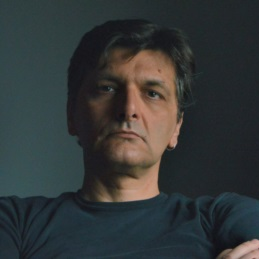Advances on Image, Video and Signal Processing
A special issue of Applied Sciences (ISSN 2076-3417). This special issue belongs to the section "Computing and Artificial Intelligence".
Deadline for manuscript submissions: closed (20 July 2022) | Viewed by 3032
Special Issue Editors
Interests: machine learning; swarm intelligence
Interests: applied mathematics; mathematical modeling in physics and engineering; optimal control; optimization; inverse problems; mathematical finance; numerical methods
Special Issues, Collections and Topics in MDPI journals
Special Issue Information
Dear Colleagues,
This Special Issue will consist of selected excellent papers from the 2022 4th International Conference on Image, Video and Signal Processing (IVSP 2022), which will be held in Singapore, on 18–20 March 2022. Contributors will be invited to submit and present papers in a wide variety of areas from concepts to applications. Topics of selected papers will include the latest research results and perspectives for future work in the image, video, and signal processing field. Related submissions outside the conference are also very welcome.
IVSP 2022 aims to provide researchers and practitioners from academia and industry with a forum to report on the latest developments in video, image, and signal processing, multimedia, and computer graphics.
This Special Issue is dedicated to demonstrating recent advances in the image, video, and signal processing field. Papers may report on original research, discuss methodological aspects, review the current state of the art, or offer perspectives on future prospects.
These papers will be subjected to peer review and are published so as to widely disseminate new research results, including developments and applications.
Topics of interest include but are not limited to:
- Image processing;
- Video processing;
- Signal processing;
- Speech processing;
- Machine learning.
Dr. Marco Castellani
Prof. Dr. Francesco Zirilli
Guest Editors
Manuscript Submission Information
Manuscripts should be submitted online at www.mdpi.com by registering and logging in to this website. Once you are registered, click here to go to the submission form. Manuscripts can be submitted until the deadline. All submissions that pass pre-check are peer-reviewed. Accepted papers will be published continuously in the journal (as soon as accepted) and will be listed together on the special issue website. Research articles, review articles as well as short communications are invited. For planned papers, a title and short abstract (about 100 words) can be sent to the Editorial Office for announcement on this website.
Submitted manuscripts should not have been published previously, nor be under consideration for publication elsewhere (except conference proceedings papers). All manuscripts are thoroughly refereed through a single-blind peer-review process. A guide for authors and other relevant information for submission of manuscripts is available on the Instructions for Authors page. Applied Sciences is an international peer-reviewed open access semimonthly journal published by MDPI.
Please visit the Instructions for Authors page before submitting a manuscript. The Article Processing Charge (APC) for publication in this open access journal is 2400 CHF (Swiss Francs). Submitted papers should be well formatted and use good English. Authors may use MDPI's English editing service prior to publication or during author revisions.






